Part 1 of How to knit without a pattern: Math
Welcome to Part 1 of how to knit without a pattern: math! If you have not yet read the “Introduction for how to knit without a pattern”, I recommend you go read that post real quick. (Click Here!)
In the “Introduction for how to knit without a pattern” post, we had a final checklist of items and information we needed to know. Here’s that list now for easy reference:
Most of this checklist is (hopefully) easily available to you. But that last one may require some math and that will be the focus of Part 1 of How to knit without a pattern: Math.
Disclaimer #1: We are doing basic knit math. This math can be used to make any flat rectangular shaped item knit from top down or bottom up. As we work through this series, I will provide more information for individual items. Some knit items are easy to knit without a pattern, while others are a bit more nuanced.
Disclaimer #2: All the numbers are approximations. In this post, we are going straight from yarn to needles. No gauge swatching. The math we are doing will help us get a finished object of the approximate size we want so we can knit without a pattern.
It is important to understand how the yarn, knitting needles and your personal knitting style all affect the gauge of your knitting. So, if you have been knitting for some time, you probably consider yourself a loose or tight knitter.
For those of you who are more new to knitting, it is totally fine that you don’t know if you are a tight or loose knitter. But if you already feel lost, please go read my post on knit gauge as that may clarify some fundamentals.
The variable necessary for “knit without a pattern” math
If you are writing a pattern, then it will require A LOT of work. BUT, if you are knitting without a pattern, then you assume all responsibility for success or failure. It’s an adventure! And it can be a fast paced one. That being said, the first number we need is the multiplier for how many stitches to cast-on.
We need the number of stitches per inch (or cm) expected when knitting with the particular yarn we chose and the particular size knitting needle recommended. This is typically given to us in stockinette stitch and is found on the brand yarn label. Also, it shows the number of stitches and (most times) rows that make up a 4×4 inch or 10×10 cm square.
Some labels will have stitches and rows for a 1×1 inch square, or may provide only the number of stitches. Still others may not include any gauge information. No matter what situation you find yourself in, do not stress!
If your label gives the stitches (and rows?) for a 1×1 inch square they have made the math so easy for you! This number is the number on which we are going to base our item width. Since you have it, you may proceed to “The coefficient necessary for ‘knit without a pattern’ math” below.
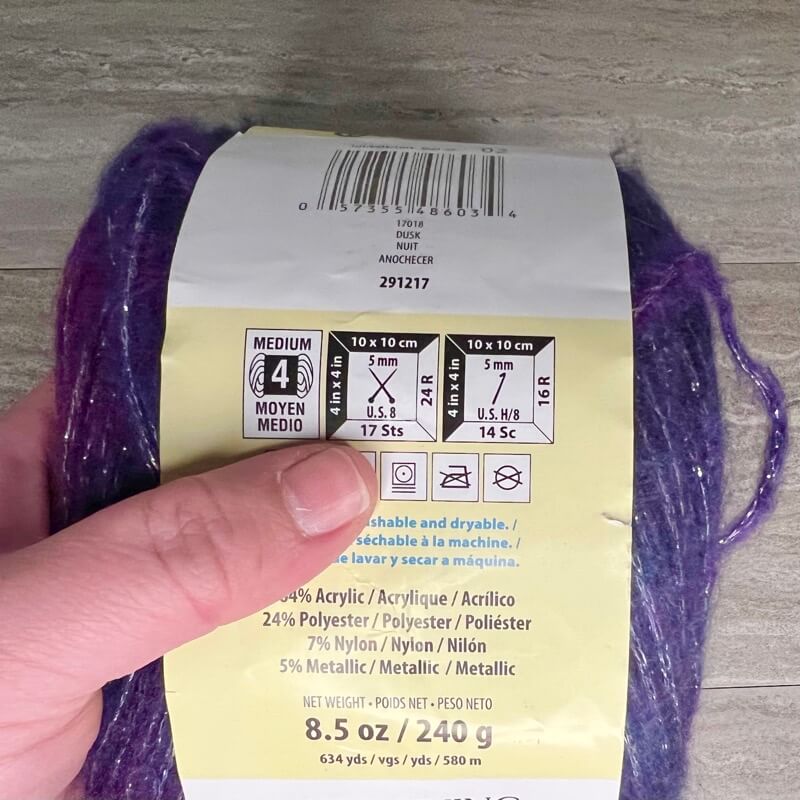
If your label gives you the number of stitches and rows that make up a 4×4 inch or 10×10 cm square, then you will need to do some math. We are concerned with knowing the number of stitches in 1 inch or 1 cm. It’s a simple solution of dividing the number of stitches by 4 inches (or 10 cm).
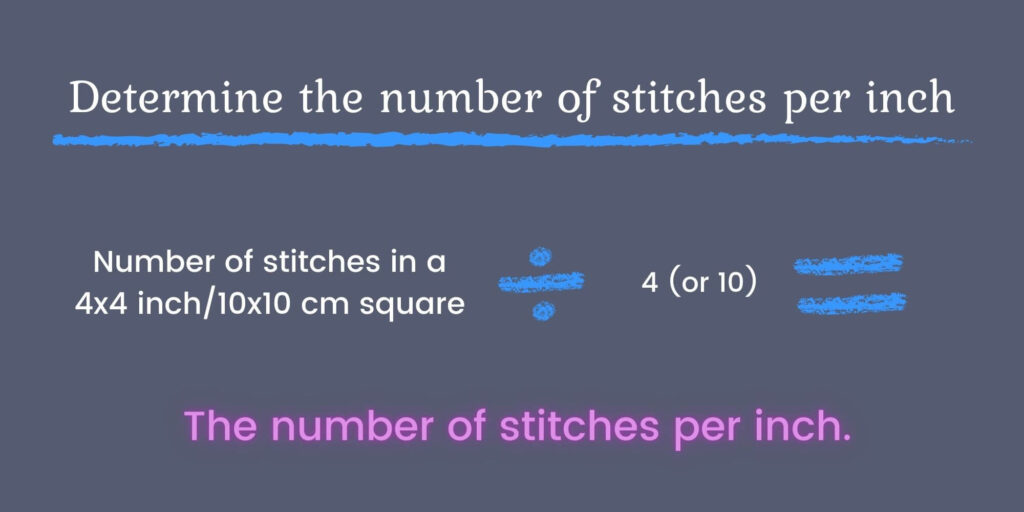
What to do if your yarn label does not have gauge information (or you do not have your label)
I refer you to The Craft Yarn Council’s website for the “Standards Yarn Weight System”. This will not only give you an approximate gauge, but also recommended needle sizes for your yarn weight. You will notice that they give everything in ranges. That is because knit gauge depends on many factors and this is only an approximation of what could be expected.
I will pretend that I am making an object with some worsted weight yarn using a 5 mm knitting needle. The Craft Yarn Council “Standards Yarn Weight System” chart tells me that the approximate gauge is between 16 and 20 stitches per 4 inches. Since I am selecting the middle needle size, I will select the middle stitch number of 18 stitches per 4 inches. Once I divide 18 by 4, I get 4.5 stitches per inch.
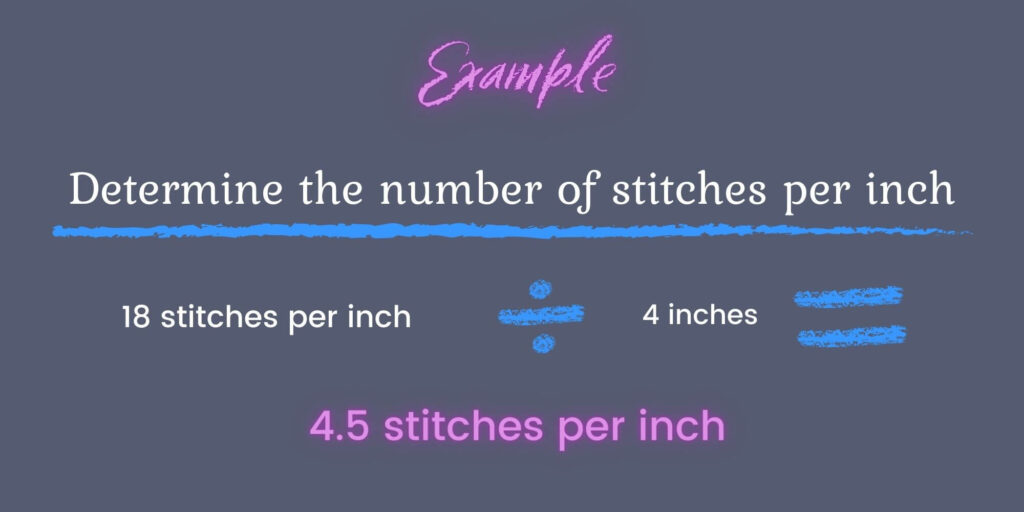
If you have been knitting for a while and know that you tend towards tight or loose knitting you may select your needle size and approximate gauge based on what you know of yourself. Then you will need to do the same math as in “If your yarn label gives you the number of stitches and rows that make up a 4×4 inch or 10×10 cm square” section above.
If you do not know, that is totally fine. Again we are dealing in math approximations because we are knitting without a pattern. We are going rogue, and approximations will have to do.
The information you need to have before proceeding:
The coefficient necessary for “knit without a pattern” math
Can you tell I have kids in Algebra?
Don’t worry! It’s not complicated and we don’t have to go back to algebra class. This is just my fancy way of saying the width of our knit item. The math is very simple. It is the number of stitches per inch (or cm) multiplied by the width of your desired object.
When you do this math you may end up with a fraction, that’s perfectly ok. Round up or down as you wish. Remember this is an estimated cast-on number for an approximate sized object. Leave your perfectionism for gauge swatching when you knit from a pattern. (haha!)
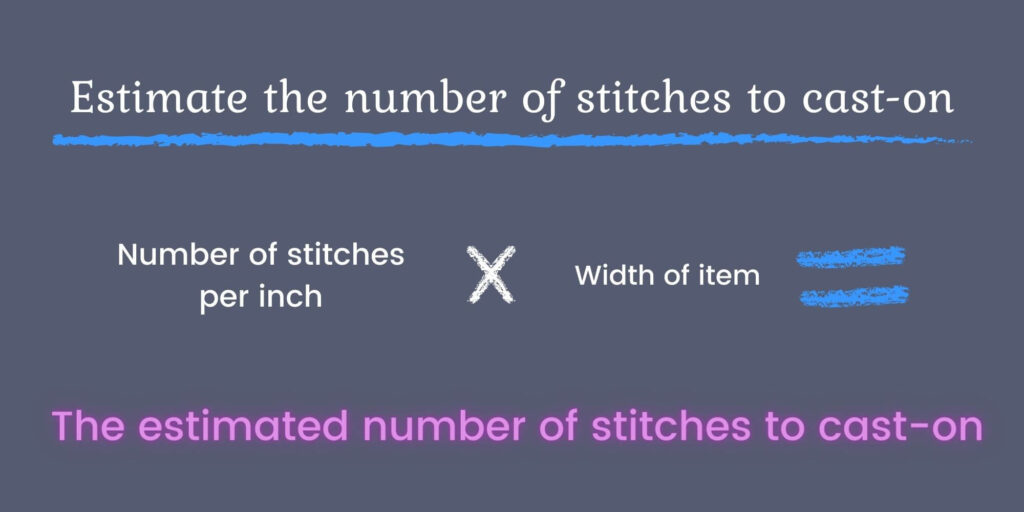
For those of you who do not feel intimidated and want to make a knit in-the-round cowl or hat, then the circumference works as well as the width of the item.
For example: using the worsted weight yarn I have, I decide I want to make an 8 inch wide dishcloth. I would simply take the 4.5 stitches per inch times 8 and get 36 stitches for my estimated cast-on number.
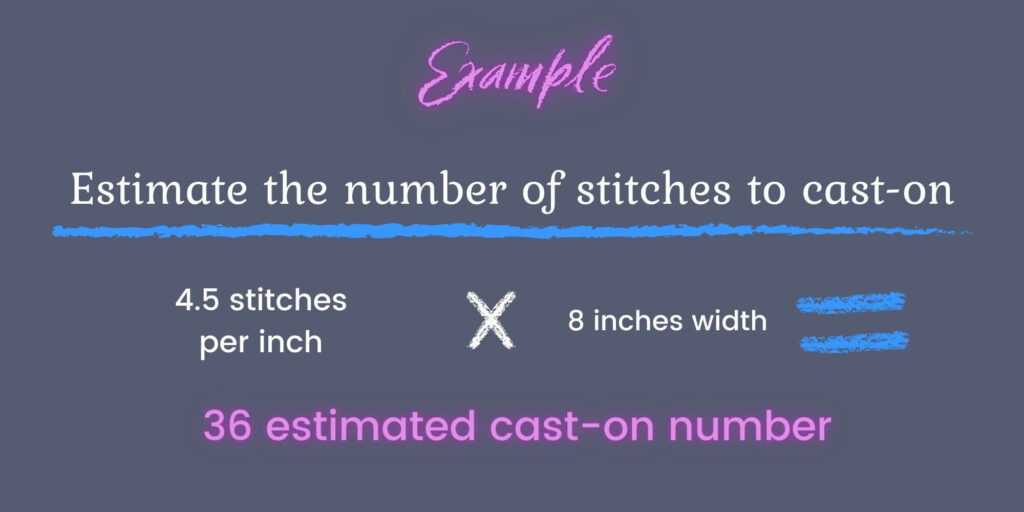
The potentially complicated part of “knit without a pattern” math
So far our math has been pretty basic. Thank goodness! Now we are at a juncture where the math could get a lot more complicated. But we can always decide to tell that complicated stuff “KISS Off!” – or “Keep It Simple Stupid.”
If you are a real math nerd and want to get into ALL the numbers, like me, then don’t worry we will get there. But sometimes, even for us math nerds, it’s good to just let our hair down and let something be easy.
KISS Method #1
I have a free calculator for this! And if you do go this route, you can even skip the math for how many stitches per 4 inches. You will simply need all your information ready to go and plug it into the calculator. It will spit out a cast-on number for you and you can begin knitting.
To get access to the calculator you need to do three things:
- Sign up for my email list
- Confirm your email
- Click the link and save a copy of the calculator to your own google drive or computer.
KISS Method #2
If you are knitting garter stitch or stockinette, then this is super easy. Cast-on the number of estimated stitches and go! These two fabrics are iconic for a reason. They ALWAYS look good, and they never go out of style. But best of all they work for every item you can knit.
Also if your goal is to just enjoy the activity of knitting, relax, have a mindless knit, this is a great solution. Or those of you who are new to knitting should just stick with these until you gain some confidence and skill. Heck! I’ve been knitting forever and I still knit just little scraps of fabric just to do it.
KISS Method #3
If you have selected a stitch pattern that has an easy number of stitches for a repeat and no additional stitches, then your math will be equally simple. You can do some quick math to determine if you have the right number of cast-on stitches or need to add a stitch or two.
Take your estimated cast-on number divided by your stitch pattern repeat number and then possibly round up or down. You may also decide you need to add or eliminate stitches. This is when knowing if you are a “loose” or “tight” knitter can be helpful.
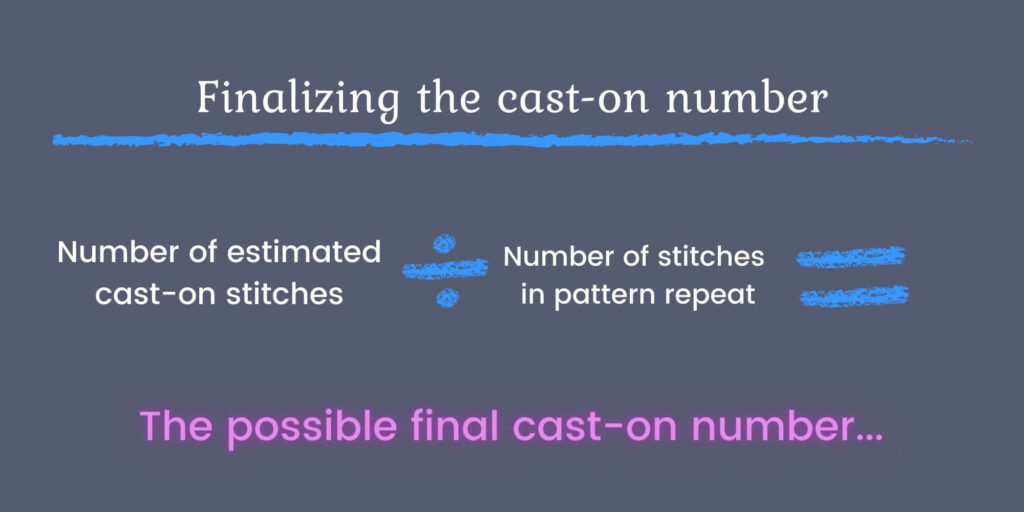
Continuing with the example we’ve been using, my estimated cast-on number is 36. If I choose to do moss stitch, which is a 4 stitch repeat with no additional stitches, then I can easily determine that 36 divided by 4 is 9. I get a whole number as my answer and I can cast-on.
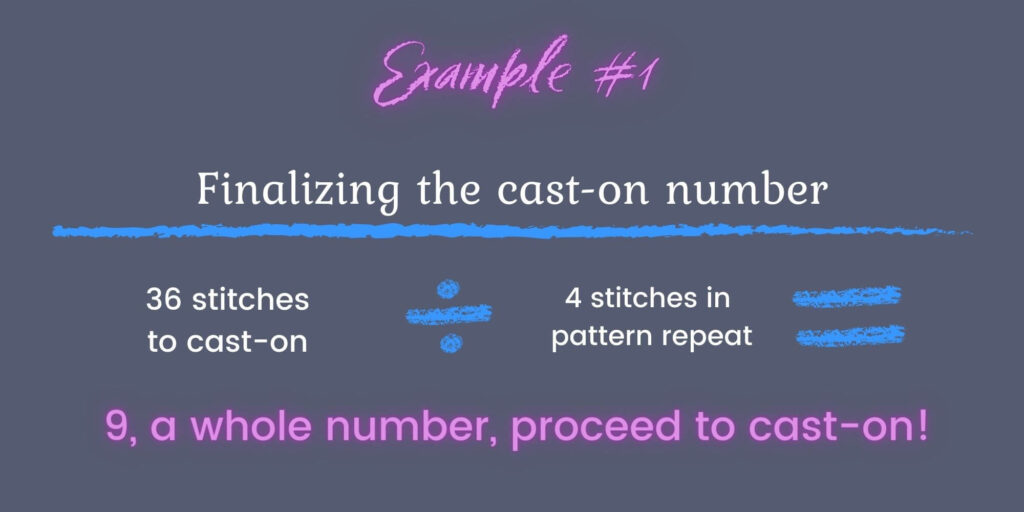
However, if your approximate cast-on number is 36 and you choose to do a 7-stitch repeat, then The math is 36 divided by 7 equals 5.12… You can round to the nearest whole number, which in this case is a 5. Then take 7 stitches in the pattern repeat and multiply it by 5 repeats to get 35 stitches. And you have your final cast-on number of 5.
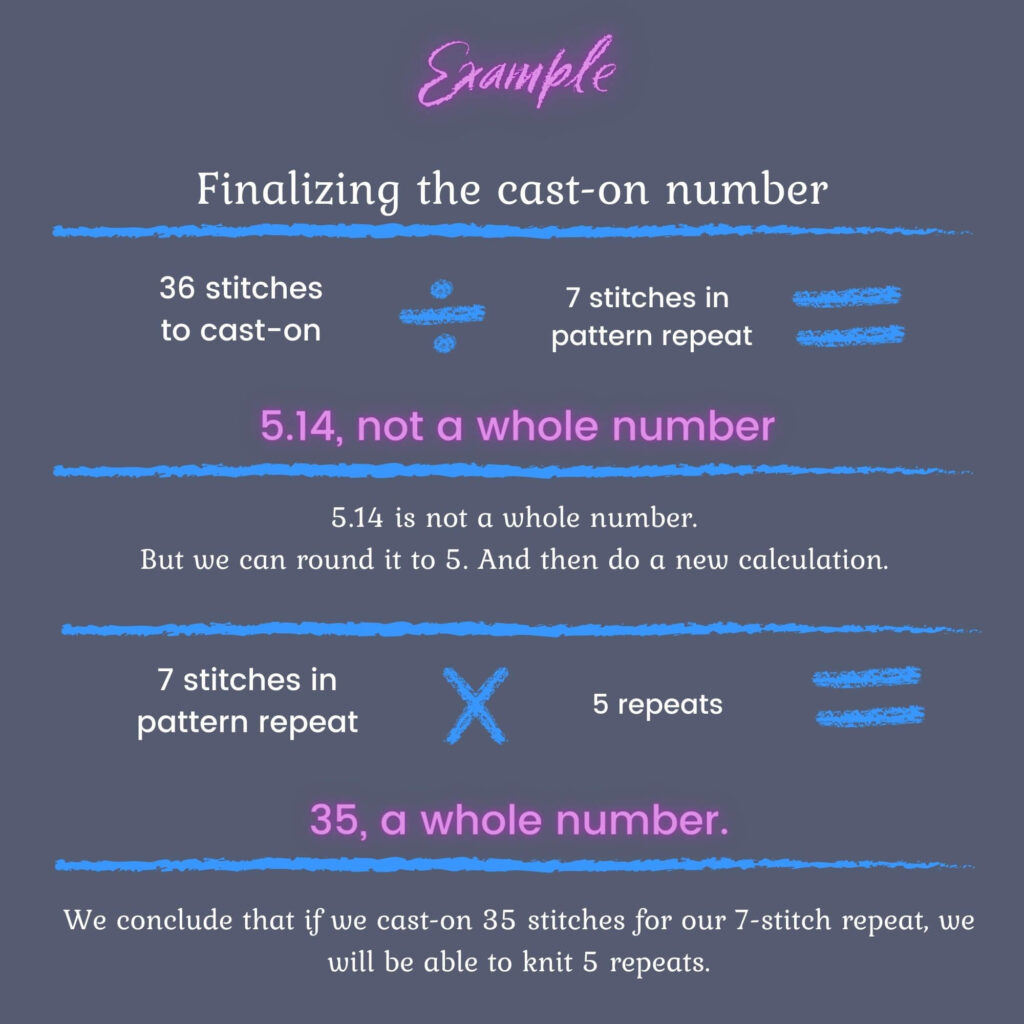
No more smoochin, let’s get our math nerd on…
A quick side story…
I love the word smooching. It’s so old fashioned and no one uses it anymore. But recently I was teasing my sister that Bruce Willis himself said that Die Hard is NOT a Christmas movie. Which apparently isn’t the entire quote (she corrected me). And posed an interesting theory. If Die Hard is not a Christmas movie, even though it takes place at Christmas, then neither is Home Alone. Kevin is basically the kids version of Die Hard.
I’ll let that sink in for you. But in Home Alone Two, which I have watched far too many times with my son, the fake movie actor says “You been smoochin with everybody!” And I just wanted to say smooch.
OK, now you want to knit without a pattern and you also want to have a complex stitch pattern with additional stitches and a selvedge edge! Gurl, you get me. That’s why I made the calculator. Because I often find myself in exactly that same situation.
So, you can scroll back up to KISS Method #1 and grab the calculator. But if you want to understand the math then keep on reading.
We will proceed with our estimated cast-on number of stitches. But now things are going to become complicated. We want to take our estimated cast-on number and subtract from it the selvedge edge stitches and any additional stitches required by the stitch pattern. We will take that new number and divide it by the number of stitches in the pattern repeat.
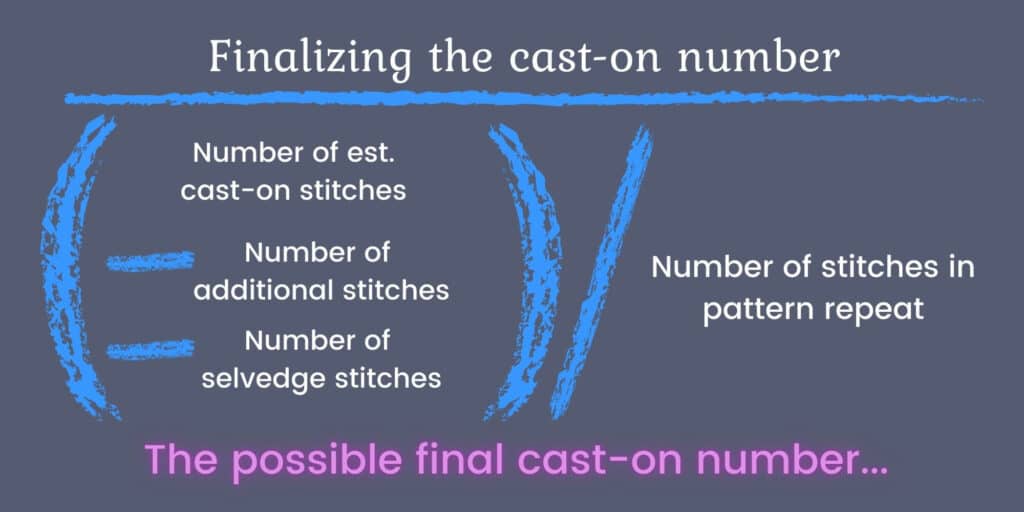
If you get a whole number – Hooray!!! You are ready to cast-on!
If you did not get a whole number, then we have some more math to do.
Just like in Kiss Method #3 Example #2, we are going to do some adjusting of numbers and instead of subtracting and dividing, we will multiply and add our way to a final cast-on number.
First, you will take the fraction you got from subtracting and dividing and round it up or down to a whole number. You can round this number up or down depending on your knit style, preference, or according to regular rounding rules.
Second, you will multiply the whole number by the number of stitches in the repeat.
Third, take that number and add to it the additional stitches required by your stitch pattern, plus the selvedge edges and voila! You have your final cast-on number.
Using our same example, we have an estimated cast-on number of 36. I want to have 3 stitches of selvedge edge all around my knit. My stitch pattern requires repeats of 7 stitches with 3 additional stitches.
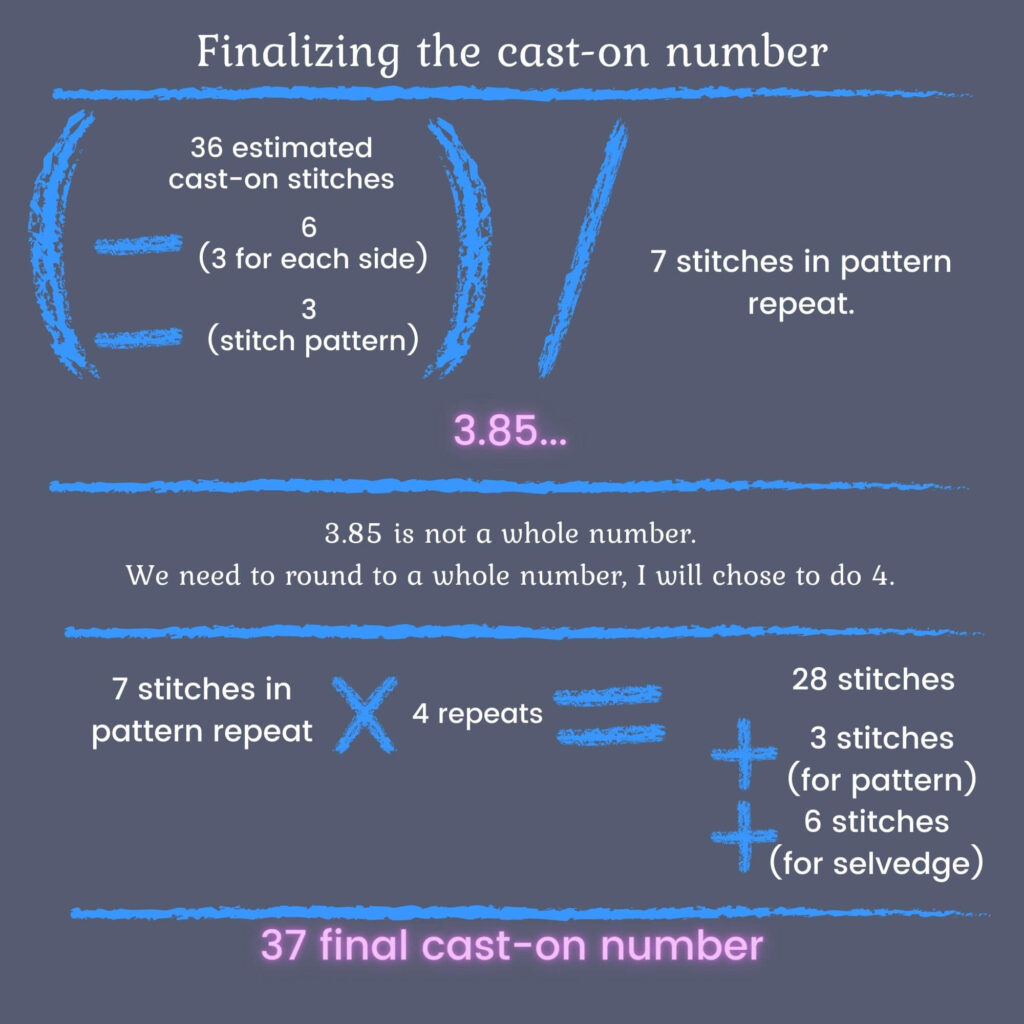
What do you think? Are you ready for my calculator now? It’s easy with just three quick steps.
- Sign up for my email list
- Confirm your email
- Click the link to get the calculator and save it to your google drive or device
How many rows or rounds do I knit?
If you’ve been knitting for a while, then you already know that often the row and round gauge is not as important as the stitch gauge number. I never calculate how many rows or rounds I need to knit. I simply knit until my project is big enough.
But, if you want to calculate how many rows and rounds you need, then you can follow all the methodology we used in this post. Instead of using the stitch gauge number for calculations, you will use the row height. And instead of the “number of estimated cast-on stitches” you will be going for “estimated number of rows”.
Of course you will need to finish the rows/rounds as required by your stitch pattern. So if it says to repeat the 4 rows/rounds and finish on a row/round 4, then that is what you will need to do.
Knit without a pattern final cast-on number
I hope that after all of the work we have put in, you were able to find the correct cast-on number. If you struggle with any of the math, or understanding any of the concepts, then please don’t hesitate to reach out to me.
Have questions? Leave me a comment below! Or send me an email lois@ozzylosiknitdesigns.com
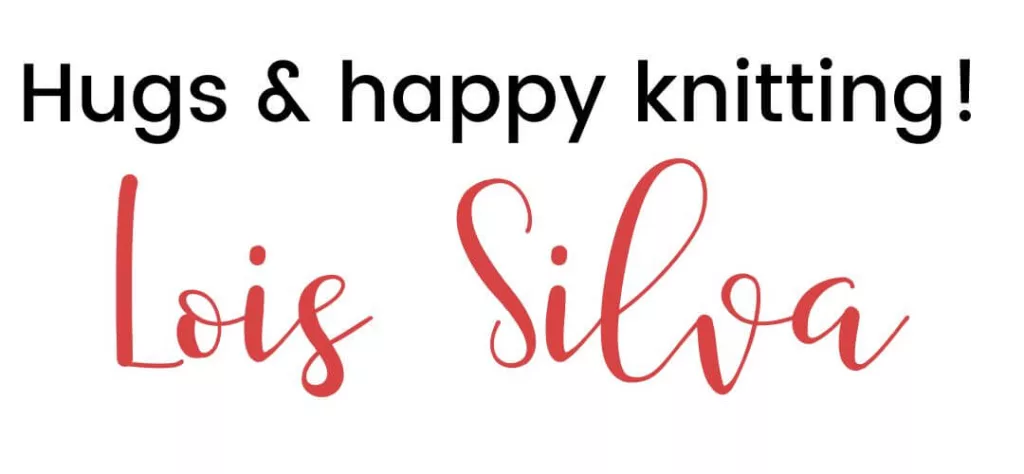
Introduction for how to knit without a pattern
Learn the basics of how to knit without a pattern.
Part 2: How to knit without a pattern
What can I knit with the amount of yarn I have?
Part 3: Can I make my knit into a pattern?
Can you turn your knit without a pattern into a pattern?

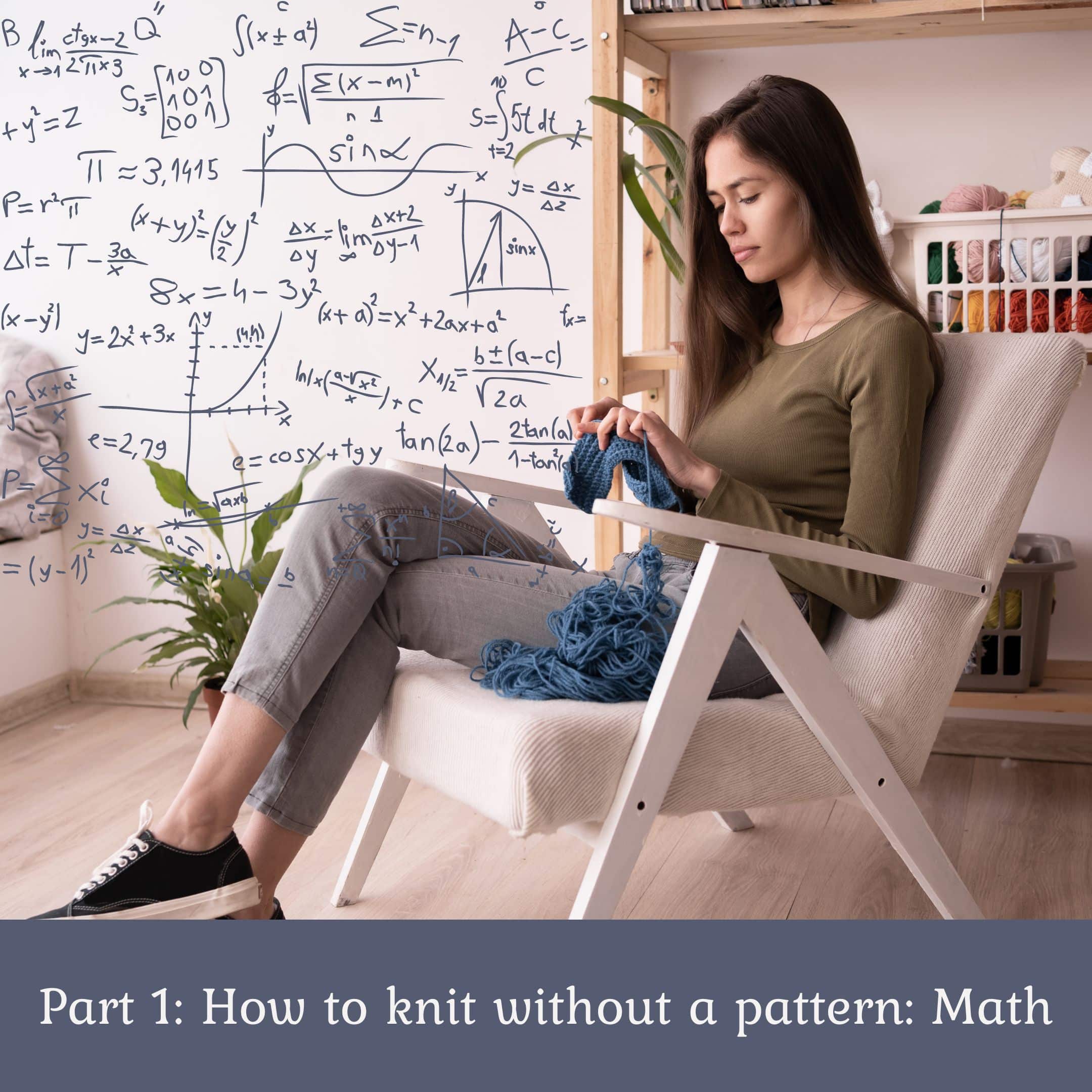
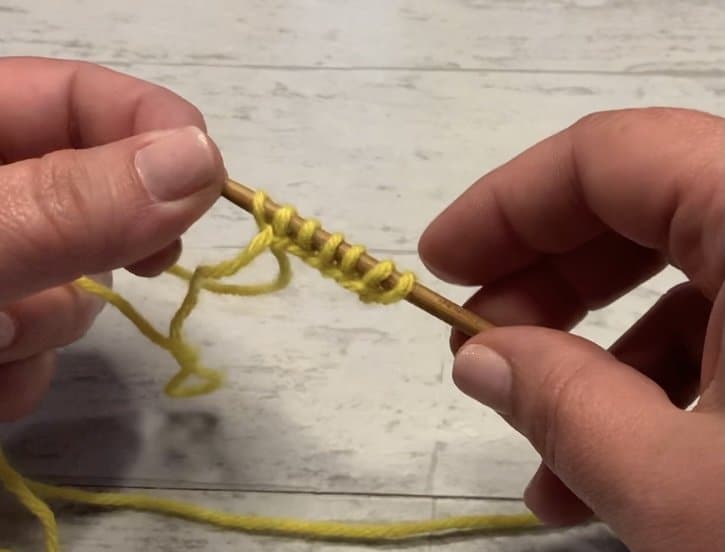
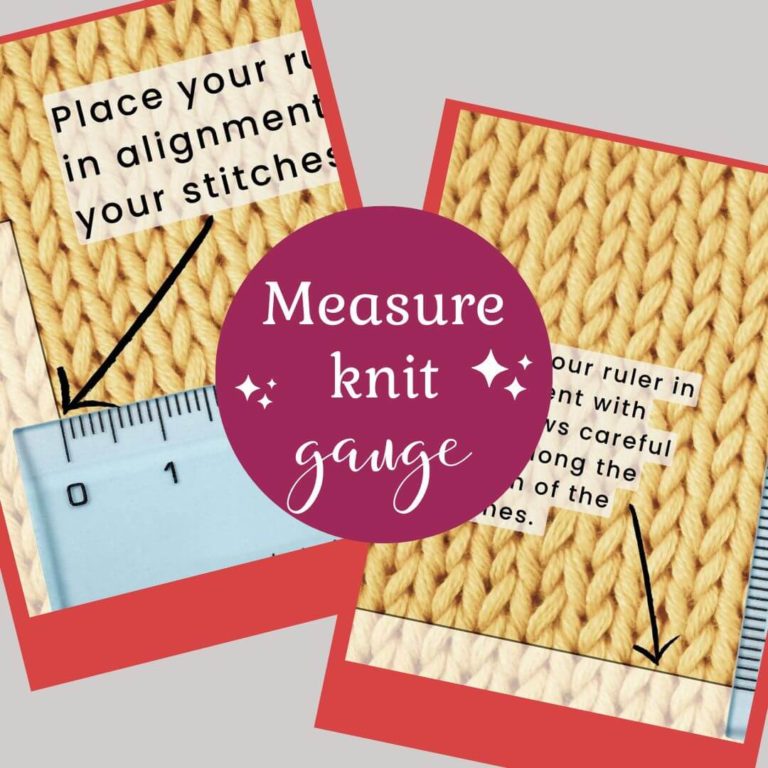

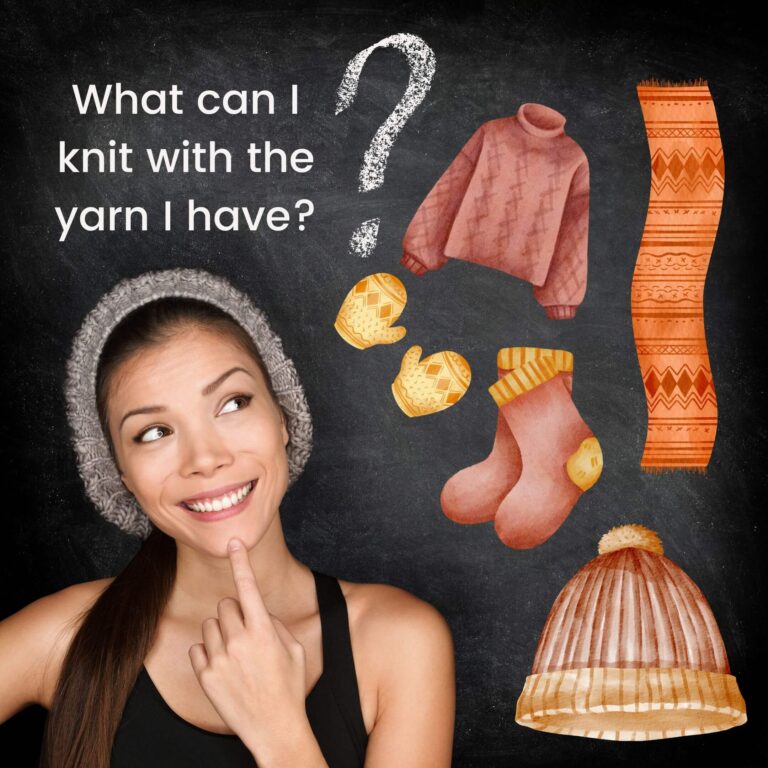
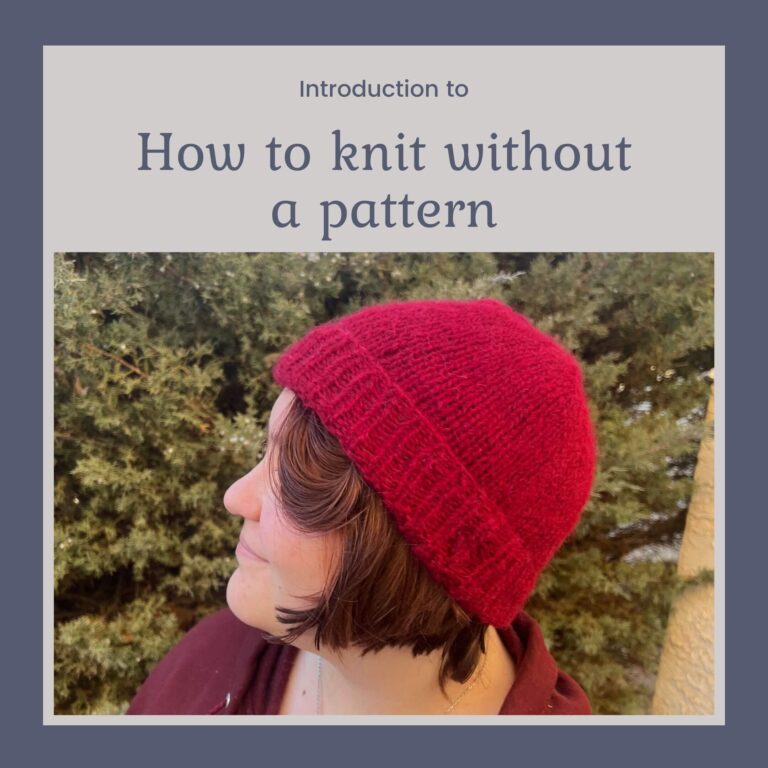
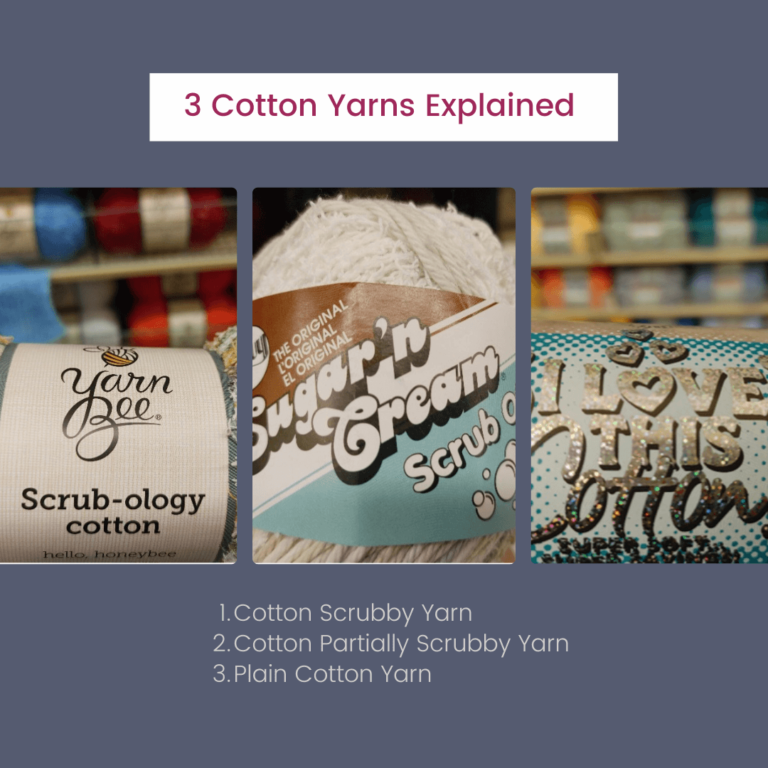
2 Comments